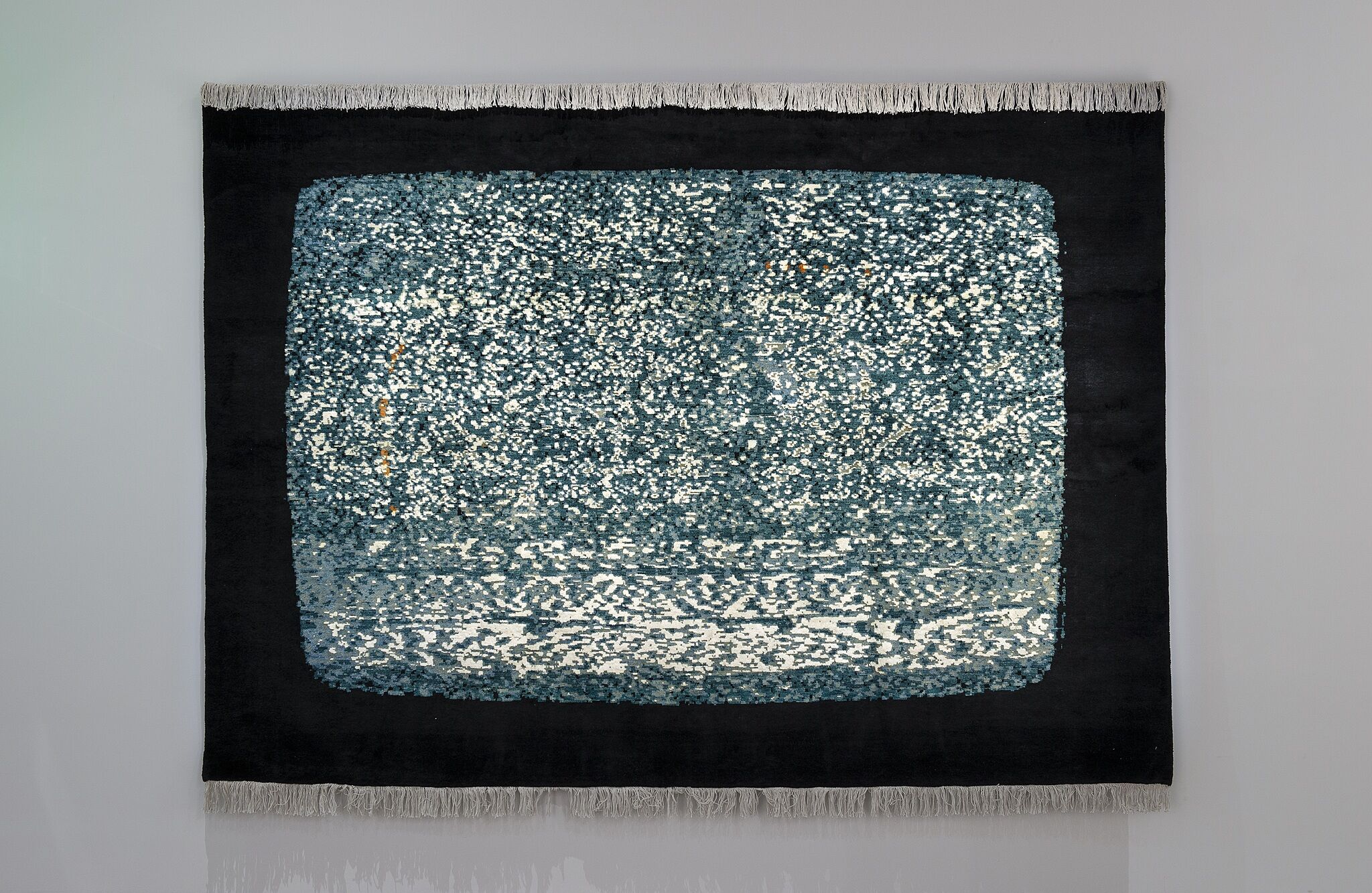Whitney Biennial 2019 | Art & Artists
May 17–Oct 27, 2019
Whitney Biennial 2019 | Art & Artists
Nicholas Galanin
24
Floor 1 and 6
Born 1979 in Sitka, AK
Lives in Sitka, AK
Woven in the image of static on a television set, Nicholas Galanin’s White Noise, American Prayer Rug offers a critical diagnosis of contemporary American life. Although prayer rugs typically serve as movable sites of devotion, this one probes American culture’s relationship with white noise, an acoustic vibration sometimes used to drown out unwanted sounds. Galanin, whose work often examines the complexities of contemporary Indigenous identity, culture, and representation, has identified race as a critical conceptual element of this exploration, pointing out that “whiteness as a construct has been used historically throughout the world to obliterate the voices and rights of generations of people and cultures regardless of complexion.” This other form of white noise, he asserts, has in recent years become a “source of increasing intolerance and hate.”
White Noise, American Prayer Rug, 2018
-
0:00
Nicholas Galanin, White Noise Prayer Rug
0:00
Nicholas Galanin: My name is Nicholas Galanin, Yéil Ya-Tseen. I'm Tlingit and Unangax, based in Sitka, Alaska.
Narrator: Rather than resting on the floor, Galanin’s White Noise American Prayer Rug hangs on the wall, like a television. The image woven into its surface is static—the visual equivalent of white noise.
Nicholas Galanin: The white noise is a reference to, cultural amnesia, selective amnesia that is witnessed in our communities through history, through the telling or recounts of history, through the framework and the words, and the vocabulary used to acknowledge our reference, to Indigenous genocide on Indigenous land that's still continues today in that violence.
There's a real danger in disconnect in our communities.
When you’re disconnected from land it becomes really easy to inflict violence on that land, whether it's environmental violence or violence on communities.
-
0:00
Nicholas Galanin, Let them enter dancing and showing their faces: Shaman
0:00
Nicholas Galanin: My name is Nicholas Galanin, Yéil Ya-Tseen. I'm Tlingit and Unangax, based in Sitka, Alaska.
Narrator: Galanin made the work in the East-facing window of Untitled restaurant—in the direction of the High Line, away from the river. It’s also visible from the Museum’s main lobby, and it’s called Let them enter dancing and showing their faces: Shaman.
Nicholas Galanin: I like the idea of this work being at the entrance and in Tlingit culture, we have entrance dances where you slowly reveal your face as you enter into the space.
Narrator: The image comes from a monoprint the artist made, depicting a woman in profile. She’s wearing a labret, a lower-lip ornament that is worn by high-ranking women in Tlingit and Unangax communities.
Nicholas Galanin: I think that reference to an acknowledgement of women is what a lot of our current society needs to move forward in a positive way.
And it's a reference to these actions that connect us. The actions I'm referencing are the processing of subsistence, smoking our salmon, cleaning the salmon, picking berries, our relationship to land, our relationship to the next generation and our children and that love that's in that process.

